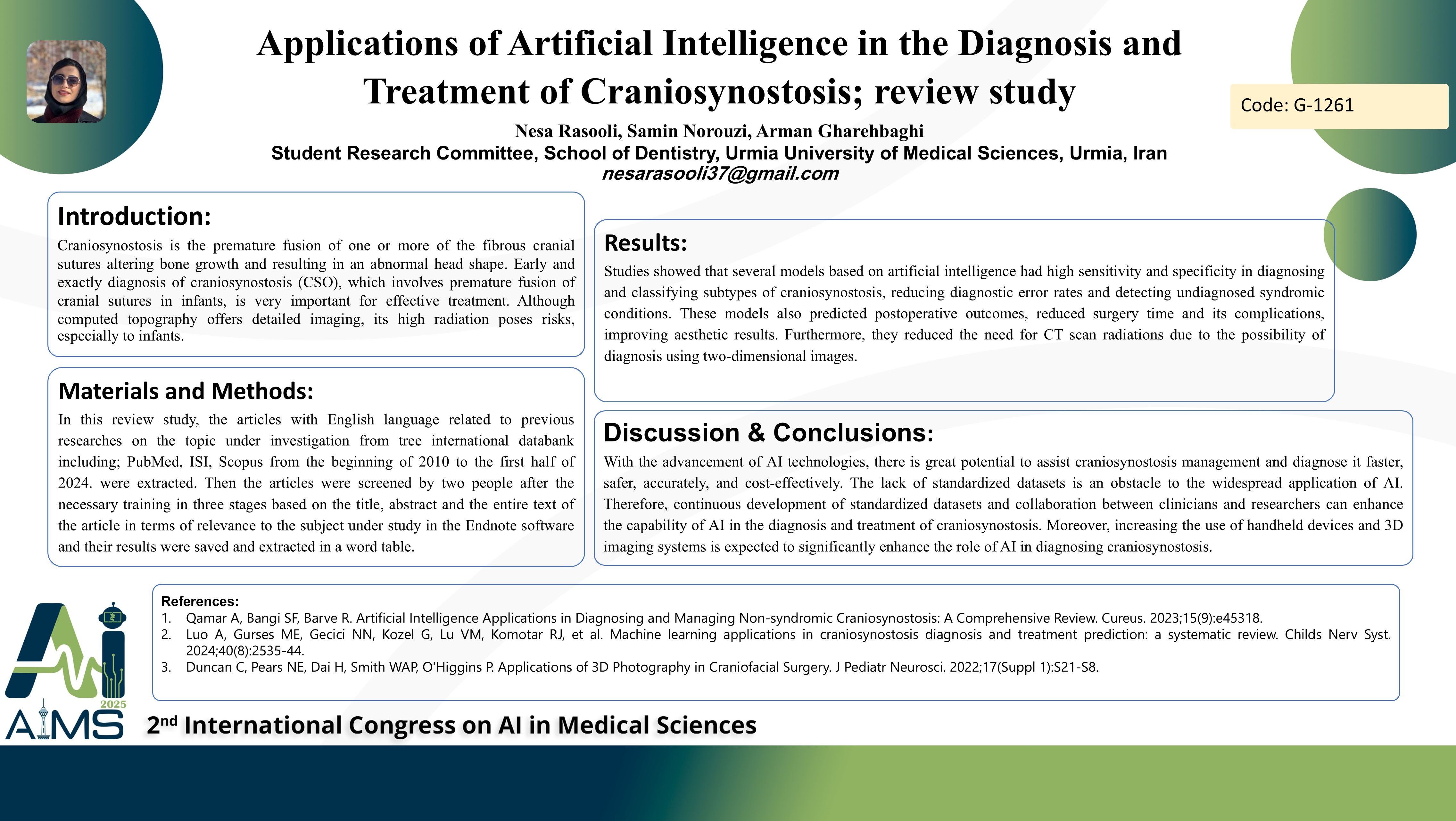کاربردهای هوش مصنوعی در تشخیص و درمان کرانیوسینوستوز؛ مطالعه مروری
کد: G-1261
نویسندگان: Nesa Rasooli * ℗, Samin Norouzi, Arman Gharehbaghi, Dr. Samira Mostafazadeh
زمان بندی: زمان بندی نشده!
برچسب: سیستم های تصمیم یار بالینی
دانلود: دانلود پوستر
خلاصه مقاله:
خلاصه مقاله
Background and aims: Craniosynostosis is the premature fusion of one or more of the fibrous cranial sutures altering bone growth and resulting in an abnormal head shape. Early and exactly diagnosis of craniosynostosis (CSO), which involves premature fusion of cranial sutures in infants, is very important for effective treatment. Although computed topography offers detailed imaging, its high radiation poses risks, especially to infants. Method: In this review study, the articles with English language related to previous researches on the topic under investigation from tree international databank including; PubMed, ISI, Scopus from the beginning of 2010 to the first half of 2024. were extracted. Then the articles were screened by two people after the necessary training in three stages based on the title, abstract and the entire text of the article in terms of relevance to the subject under study in the Endnote software and their results were saved and extracted in a word table. Results: Studies showed that several models based on artificial intelligence had high sensitivity and specificity in diagnosing and classifying subtypes of craniosynostosis, reducing diagnostic error rates and detecting undiagnosed syndromic conditions. These models also predicted postoperative outcomes, reduced surgery time and its complications, improving aesthetic results. Furthermore, they reduced the need for CT scan radiations due to the possibility of diagnosis using two-dimensional images. Conclusion: With the advancement of AI technologies, there is great potential to assist craniosynostosis management and diagnose it faster, safer, accurately, and cost-effectively. The lack of standardized datasets is an obstacle to the widespread application of AI. Therefore, continuous development of standardized datasets and collaboration between clinicians and researchers can enhance the capability of AI in the diagnosis and treatment of craniosynostosis. Moreover, increasing the use of handheld devices and 3D imaging systems is expected to significantly enhance the role of AI in diagnosing craniosynostosis.
کلمات کلیدی
Artificial Intelligence, Craniosynostosis, Diagnosis, Deep learning
